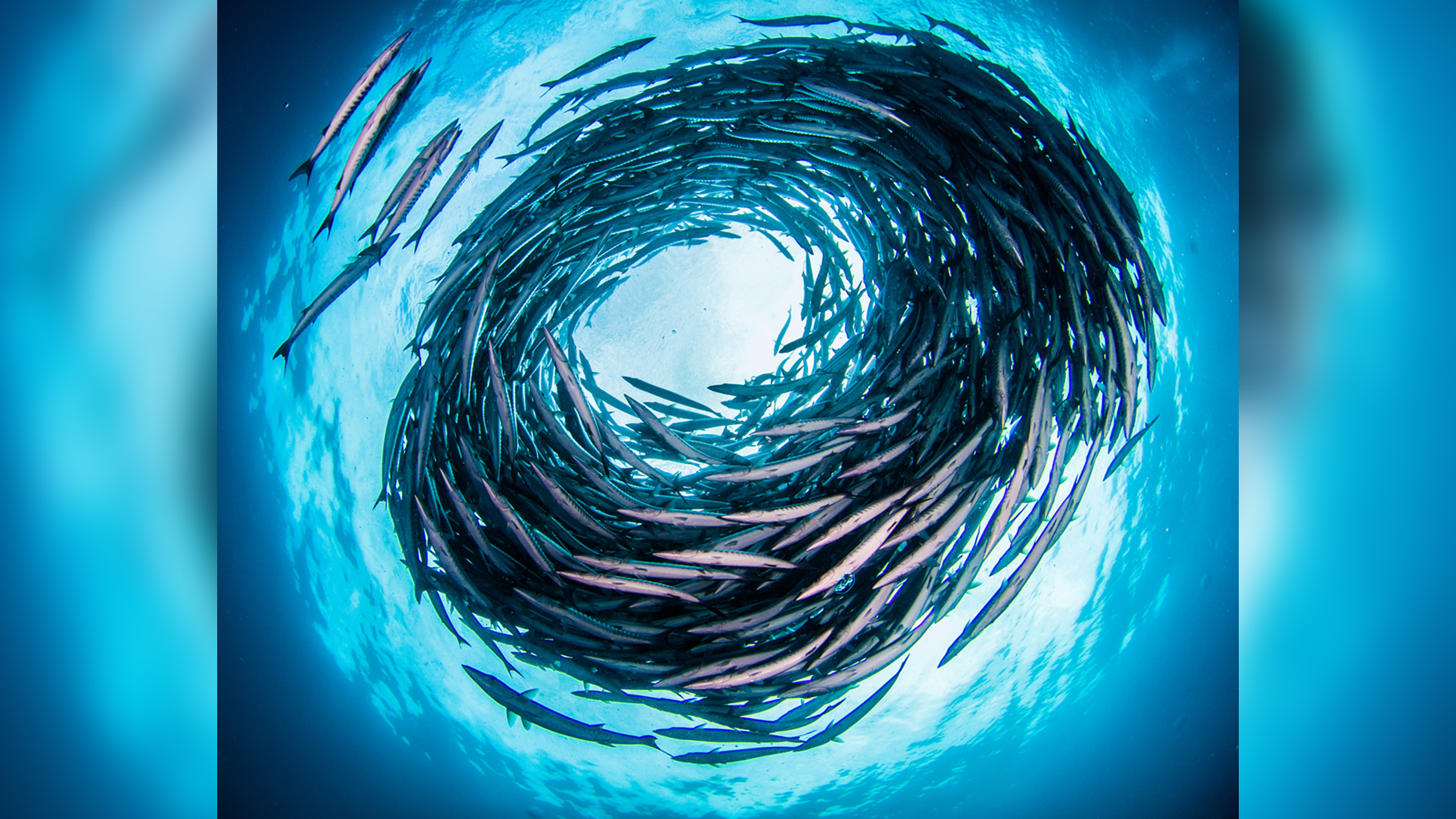Meet the swirlon, a new kind of matter that bends the laws of physics
Researchers discover a new state of active matter.

Fish school, insects swarm and birds fly in murmurations. Now, new research finds that on the most basic level, this kind of group behavior forms a new kind of active matter, called a swirlonic state.
Physical laws such as Newton's second law of motion — which states that as a force applied to an object increases, its acceleration increases, and that as the object's mass increases, its acceleration decreases — apply to passive, nonliving matter, ranging from atoms to planets. But much of the matter in the world is active matter and moves under its own, self-directed, force, said Nikolai Brilliantov, a mathematician at Skolkovo Institute of Science and Technology in Russia and the University of Leicester in England. Living things as diverse as bacteria, birds and humans can interact with the forces upon them. There are examples of non-living active matter, too. Nanoparticles known as "Janus particles," are made up of two sides with different chemical properties. The interactions between the two sides create self-propelled movement.
Related: What's that? Your physics questions answered
To explore active matter, Brilliantov and his colleagues used a computer to simulate particles that could self-propel. These particles weren't consciously interacting with the environment, Brilliantov told Live Science. Rather, they were more akin to simple bacteria or nanoparticles with internal sources of energy, but without information-processing abilities.
The first surprise was that this active matter behaves very differently than passive matter. Different states of passive matter can coexist, Brilliantov said. For example, a glass of liquid water can gradually evaporate into a gaseous state while still leaving liquid water behind. The active matter, by contrast, didn't coexist in different phases; it was all solid, all liquid or all gas.
The particles also grouped together as large conglomerates, or quasi-particles, which milled together in a circular pattern around a central void, kind of like a swirl of schooling sardines. The researchers dubbed these particle conglomerates "swirlons," and named the new state of matter they formed a "swirlonic state."
In this swirlonic state, the particles displayed bizarre behavior. For example, they violated Newton's second law: When a force was applied to them, they did not accelerate.
Get the world’s most fascinating discoveries delivered straight to your inbox.
"[They] just move with a constant velocity, which is absolutely surprising," Brilliantov said.
The simulations were basic, and experimental work with real-world active matter is an important next step, he said. Brilliantov and his colleagues also plan to do more complex simulations using active-matter particles with information-processing abilities. These will more closely resemble insects and animals and help to reveal the physical laws governing schooling, swarming and flocking. Ultimately the goal is to create self-assembling materials out of active matter, Brilliantov said, which makes it important to understand the phases of this kind of matter.
"It's quite important that we see the nature of active matter" is much richer than that of passive matter, Brilliantov said.
The research was detailed in October 2020 in the journal Scientific Reports.
Originally published on Live Science.

Stephanie Pappas is a contributing writer for Live Science, covering topics ranging from geoscience to archaeology to the human brain and behavior. She was previously a senior writer for Live Science but is now a freelancer based in Denver, Colorado, and regularly contributes to Scientific American and The Monitor, the monthly magazine of the American Psychological Association. Stephanie received a bachelor's degree in psychology from the University of South Carolina and a graduate certificate in science communication from the University of California, Santa Cruz.


